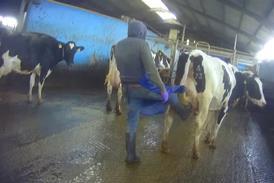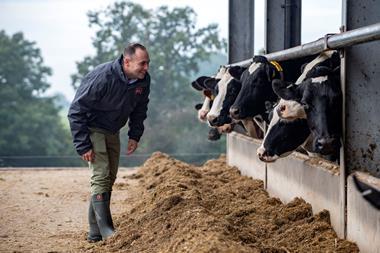After a dull winter and early spring, dairy product prices across the EU and in the UK are now on a rising trend.
This is due to three factors. Milk output in recent months in most EU countries has been held back by the late and cold spring and, whilst supplies may soon recover, this has left dairy markets tighter than expected.
The second factor is the significant rise in cheese consumption (where BSE has led to a cut in beef and veal consumption), which is having the effect of diverting milk away from butter and milk powders into cheese production.
Thirdly, the prospect for exports to third countries is better than was feared following the BSE and FMD crises, as world market buyers face limited availability from non-European sources and are now prepared to buy from the EU, or at least parts of it.
World market prices are going up and the weakness of the euro is making EU supplies more competitive.
Last week, UK bulk butter, following the trend of continental markets, was nearly breaking through the £2,000 per tonne level, about 5% higher than a month ago and around 10% above the intervention price level.
Mild Cheddar prices are also edging up in the UK to around £2,300 per tonne up £50 per tonne in the past few weeks.
The changes have been even more significant with milk powders. In recent weeks, SMP prices have risen by about 8% and whole milk powder is up around 4%.
The most dramatic change has been with whey powder where prices have rocketed by one third since late April.
{{M/E CANNED GOODS }}
Close menu
- Home
- Retail & Wholesale
-
Products & Suppliers
- Back to parent navigation item
- Products & Suppliers
-
Product Categories:
- Back to parent navigation item
- Product Categories:
- Alcoholic drinks
- Bakery
- Cereals & breakfast
- Cheese
- Chicken & poultry
- Chocolate
- Confectionery
- Crisps, nuts & snacks
- Dairy
- Fish
- Fresh produce
- Frozen
- Household
- Meat
- Own Label
- Sauces & condiments
- Seasonal
- Soft drinks
- Vaping
- Vegan & plant-based
- World foods
- Suppliers
- People
- Reports & Data
-
Topics A-Z
- Back to parent navigation item
- Topics A-Z
-
Popular topics:
- Back to parent navigation item
- Popular topics:
- Cost of living crisis
- Crime
- Deposit Return Schemes
- Finance
- Government & Regulation
- Health
- Inflation
- Loyalty
- Marketing
- Mergers & Acquisitions
- New Product Development
- Sourcing
- Supply chain
- Sustainability & environment
- Technology
- Ultra Processed Foods
- Vaping
- A-Z all topics
- Content by type:
- Events
- Subscribe now
Sign in to comment on this article
Not logged in before? Register for FREE guest access today.
You will be able to:
- Read more stories
- Receive daily newsletters
- Comment on stories
Advert

















No comments yet